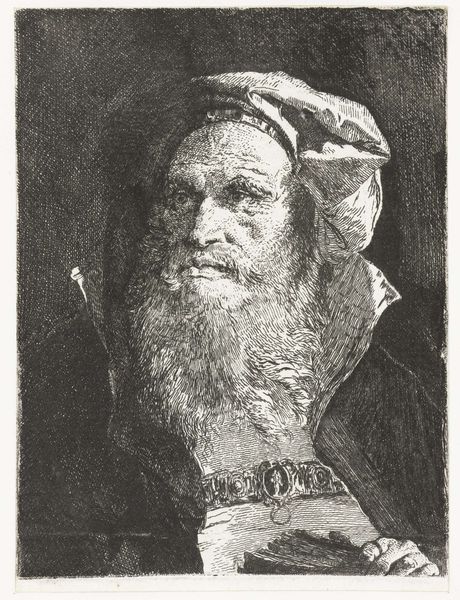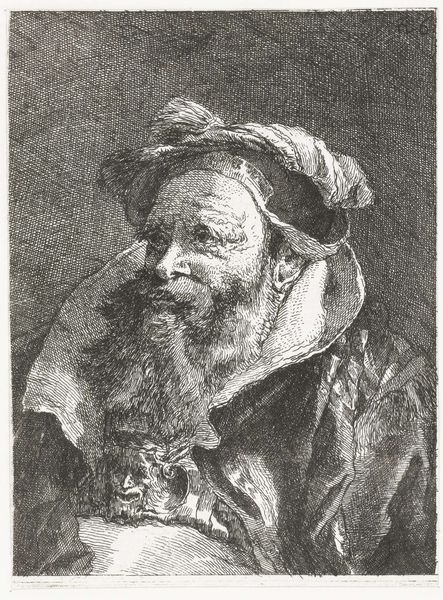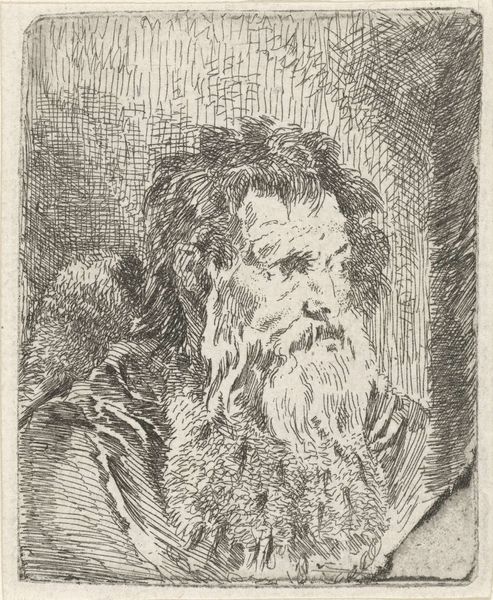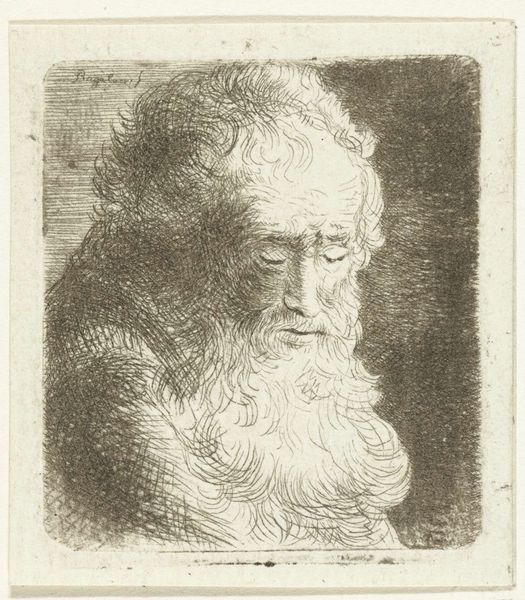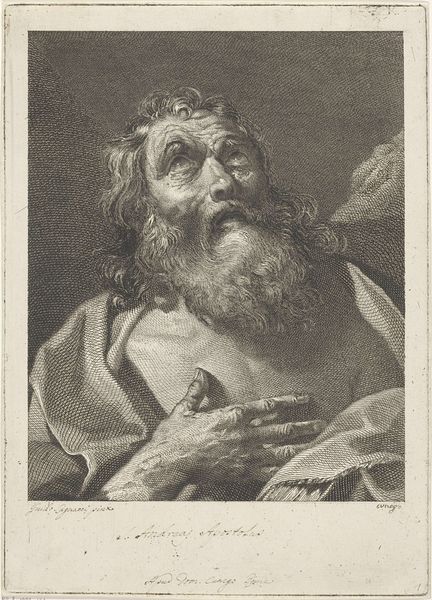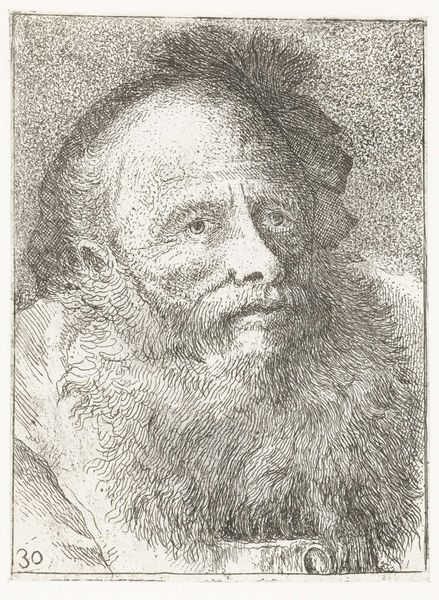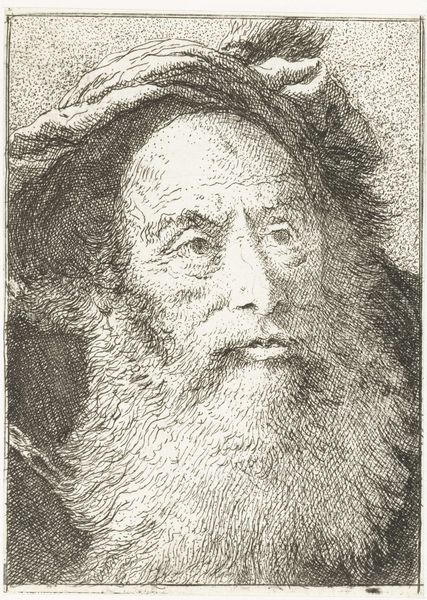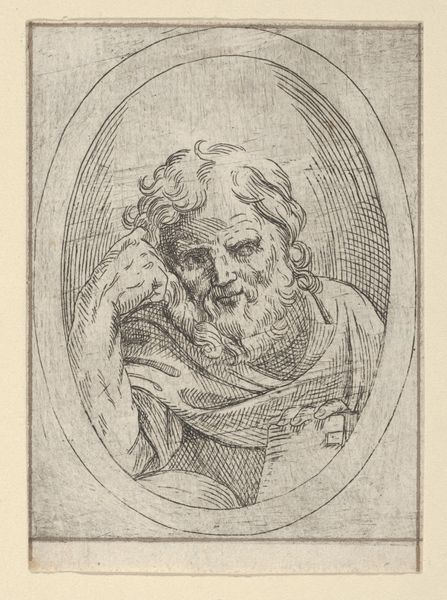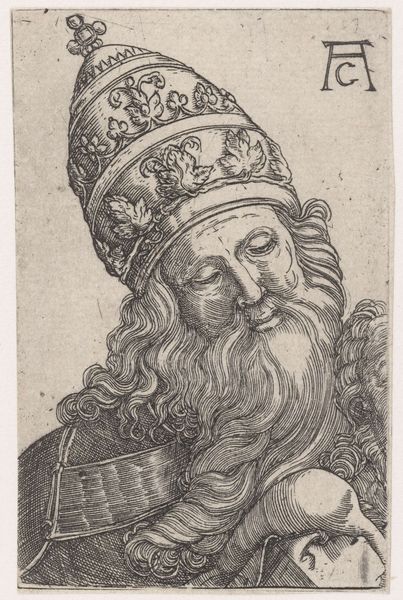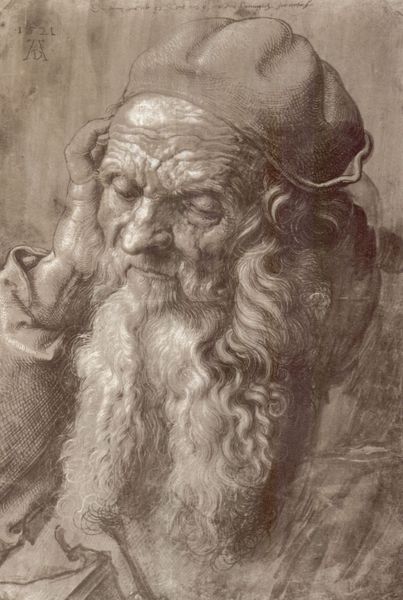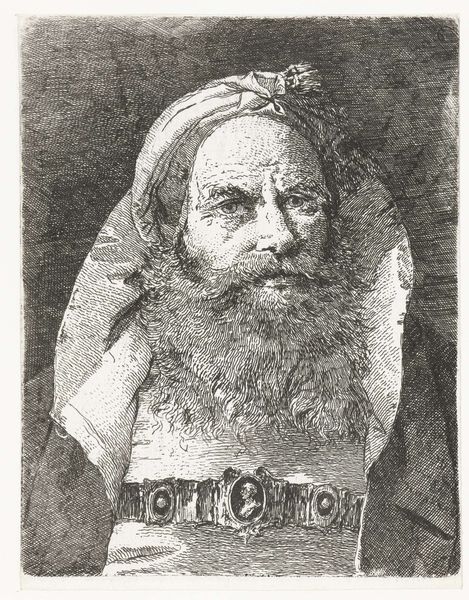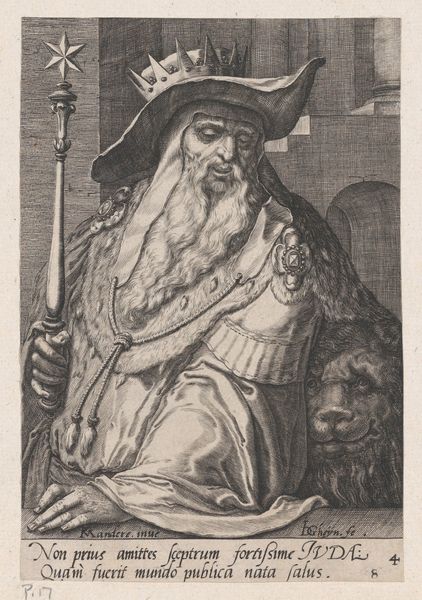
Dimensions: height 148 mm, width 115 mm
Copyright: Rijks Museum: Open Domain
Curator: Immediately, I notice the intense detailing—look at the layering in the beard and collar, and how the engraving creates a sense of depth. Editor: The etching, “Man met tulband en hoog opstaande kraag”, created by Giovanni Domenico Tiepolo sometime between 1757 and 1774, captures a dignified man in elaborate attire. Tiepolo belonged to a family renowned for their contributions to Venetian art, a lineage that deeply impacted artistic production across Europe. Curator: Yes, and considering it's an etching, you really see Tiepolo's mastery of the craft. The hatching and cross-hatching – the physical labor that went into producing this print is undeniable. These were made to be circulated. How do we read the social status indicated through that magnificent turban? Editor: Absolutely. This work allows us to think about the democratization of portraiture in the 18th century. Prints like this circulated widely, shaping perceptions of social status. Though not bespoke likenesses made for elites, such images also carried social capital for artisans. This costume might hint at wealth and authority, echoing theatrical traditions or exoticized depictions of Ottoman dignitaries. Curator: Exactly! The artist's process reveals layers of meaning and power. That emphasis on craft reflects broader workshop practices and challenges this so-called high/low art separation—even those elaborate etchings speak volumes about the lives and tastes circulating through different levels of society at the time. What do you make of his expression? Editor: It has a certain gravity, doesn't it? I wonder who he might represent—whether this is an actual person from his milieu or some historical figure carefully reconstructed through costume. Ultimately, the sitter might not even matter as much as the performance that the artist stages about rank and reputation. Curator: Agreed, this performance, precisely made, reminds us of printmaking as this era’s way of circulating social values far beyond the studio’s confines. The artist’s social and creative performance thus reveals the complex social meanings made real through distribution. Editor: Looking closely, that is very well said. Examining this artwork today offers a glimpse into the cultural mechanisms that propelled an earlier era. Curator: Indeed—studying the history imbued in “Man met tulband en hoog opstaande kraag” helps uncover stories of artistry and ambition as material.
Comments
No comments
Be the first to comment and join the conversation on the ultimate creative platform.
